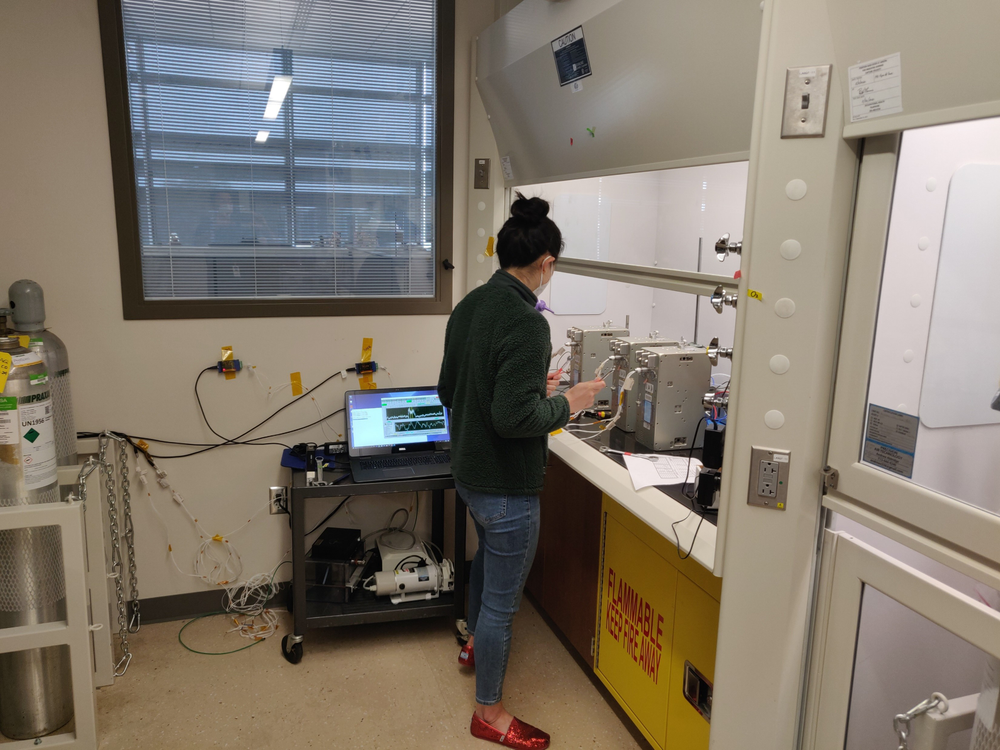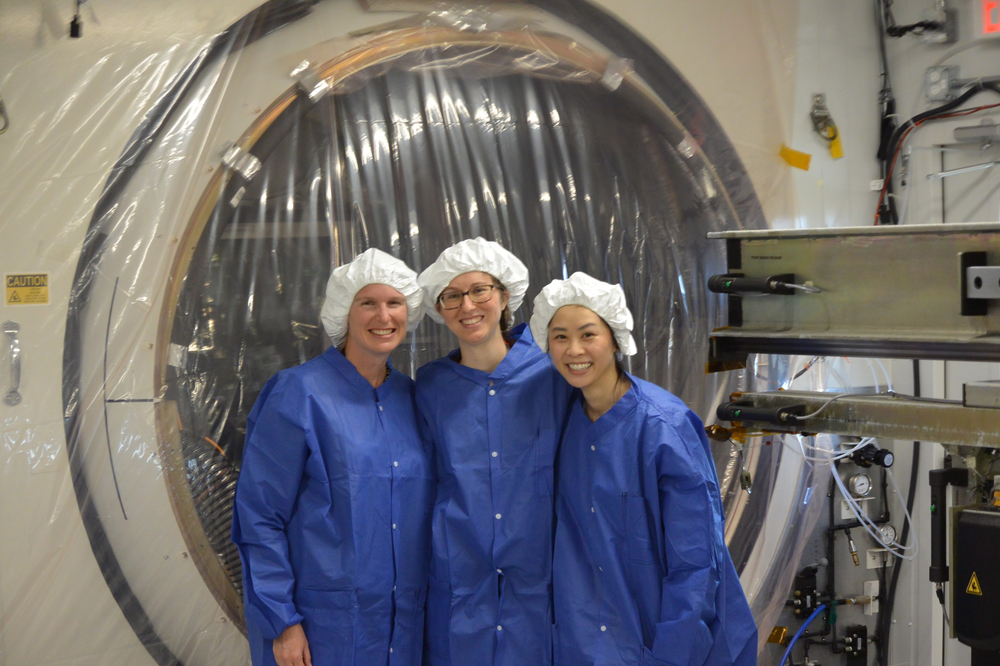Station Nation: Meet Leslie Espino - Science Communication Advocate and International Space Station Research Portfolio Manager
As the International Space Station Research Portfolio Manager and Biological & Physical Sciences Sphere lead, Leslie Espino manages science payloads to make sure the payload integration and payload development teams have the resources needed to successfully launch and operate their research. Outside of work, Leslie’s passionate about sharing the importance of the program’s research and how it benefits us here on Earth. She is also an artist and rock climber.
The Houston native shares how her experience as a first-generation Chinese American shaped her passion for space communication, her favorite aspects of her career, and more.
May is Asian American, Native Hawaiian, and Pacific Islander (AANHPI) Heritage Month and the ISS Program honors the impacts that AANHPI employees and astronauts have made to the space station. While we learn about Leslie, her path to NASA, and her hobbies outside of work, she also shares what AANHPI month means to her.

***
What ISS office do you support (e.g., Vehicle, External Integration, etc.)?
Research Integration Office (OZ).
What is your job title?
Research Portfolio Manager and Biological & Physical Sciences Sphere Lead.
Describe what your position entails:
I manage a portfolio of physical science payloads to make sure the payload integration and payload development teams have the resources needed to successfully launch and operate their research. I advocate for the payload science by keeping the ISS Program informed of the research objectives and critical schedules. My role requires establishing and maintaining a strong relationship with the payload sponsors and identifying ways the ISS Program can support the sponsor's payloads.

***
How would you describe your job to family or friends who may not be as familiar with NASA as employees who are reading this?
I help non-NASA scientists conduct their research on the space station by guiding them through the NASA and ISS Program processes for launch and operation.
How long have you been working for the agency?
Seven years.
What was your path to NASA?
In graduate school I developed chemistry tests to detect environmental water contamination. When I graduated, I monitored the environmental water quality for the space station and later the environmental air quality. I moved into the research portfolio manager role when I realized I enjoyed advocating for other scientists' research and helping people understand the importance of the research enabled by the orbiting laboratory.
Is there a space figure you look up to?
My mentor, Mary Skow, inspires me. Mary is the strategic evaluation program manager for the Chief Program Management Officer at NASA Headquarters. Mary is an inspiring leader who is engaged, approachable, and excellent at guiding teams toward a goal. She takes the time to understand the strengths of her team and constructively develop their weaknesses. Mary achieves this by fostering an environment where every member has a seat at the table and is encouraged to speak up. Mary's goal is to lead NASA and watching her do that is the best inspirational example of leadership.
What does Asian American, Native Hawaiian, and Pacific Islander (AANHPI) Heritage Month mean to you? Can you tell us about your heritage? Any special traditions?
I'm a first-generation Chinese American. This experience profoundly influenced who I am as a person. My parents come from very poor backgrounds and neither had the opportunity to finish school. When I was in college, I'd call them to share what I learned in my chemistry and biology classes. I noticed they had a mental block where they felt they could not understand what I shared because they lacked the educational background.
I have never rejected any idea as much as I rejected this one! I reject this mindset of a self-imposed barrier. I grew up watching my parents successfully navigate life in a foreign country in a foreign language. I knew firsthand my parents were capable of understanding my science classes, and it broke me to see them limit themselves over their lack of education.
I took it personally and made it my mission to include my parents in what I learned all throughout my undergraduate and graduate studies. This personal drive to engage my parents in science sparked a passion for science communication.


***
What do diversity, equity, and inclusion mean to you? How does it guide you in your work at NASA?
Diversity, equity, and inclusion means recognizing the differences that people bring to the table and specifically recognizing how that lens changes people's experiences. I work to consciously create an open environment where my team members feel safe to bring up their experiences and different viewpoints.

Do you have any advice for others, like yourself, who may be contemplating a career at NASA?
Go for it! Many people have the idea that NASA is only for scientists and engineers, but NASA's success requires folks from all different backgrounds.
What is your favorite NASA memory?
Conducting the air quality testing for Boeing's Orbital Flight Test is my favorite NASA memory. I coordinated several teams and rescheduled several times to ensure the success of the testing. It was my favorite memory because I performed the testing while the vehicle was integrated on the launch pad. It sounds silly, but it is easy to "forget" that I work at NASA.

What is the most meaningful project you've worked on during your time with NASA?
Highlighting the importance of NASA research as a high visibility speaker is the most meaningful project I've worked on. Because of the personal way I started doing science communications with my parents, it's easily the most fulfilling part of my job. Getting the opportunity to excite people about the research we do is the most satisfying combination of my background as a scientist and my personal commitment to engaging people in science.
What do you love sharing about the station to general audiences (regarding getting the general public to understand its role and how it benefits life on Earth)?
I love sharing the importance of the research our scientists are doing on the International Space Station.

***
What are your hobbies/things you enjoy doing outside of work?
I am an artist and sustainability influencer! I create art from trash to engage people in discussions about our environment. I travel to endangered environments with conservationists and make art to highlight the importance of their protection.
Also, I am a rock climber. I am happiest under a rock.

Day launch or night launch (watching)?
Night
Favorite Space Movie?
I can't watch space movies! The disasters are too real, and they stress me out.
NASA worm or “meatball” logo?
Worm.

***
Every day, we are conducting exciting research aboard our orbiting laboratory that will help us explore farther into space and bring benefits back to people on Earth. You can keep up with the latest news, videos, and pictures about space station science on the Station Research & Technology news page. It’s a curated hub of International Space Station research and digital media from NASA’s Johnson Space Center and other centers and space agencies.
Sign up for our once-a-week email newsletter to get the updates delivered directly to you! Follow updates on social media at @ISS_Research on Twitter and space station accounts on Facebook and Instagram.









